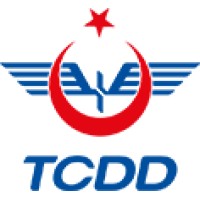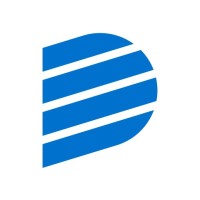
TCDD Company Cyber Security Posture
tcdd.gov.trToplam 12.803 km.lik bölge sınırları içerisinde 63 adet gar müdürlüğü, 71 adet gar şefliği, 255 adet istasyon şefliği, 395 adet durak, 194 adet sayding ve 3 adet itibat memurluğu olmak üzere toplam 981 adet gar, istasyon ve duraklarımızdan oluşan işyerlerimiz mevcuttur. 1 Bağlı Ortaklık TCDD Taşımacılık AŞ, 5 İştirak (İZBAN, Hundai Eurotem, VADEMSAŞ, SİTAŞ ve TCDD TEKNİK), 5 fabrika müdürlüğü; 1. Ankara Demiryol Fabrikası (TCDD Taşımacılık AŞ'ye bağlı) 2. Ankara Uzun Ray Kaynak ve Yol Mekanik Araçları Onarım Fabrikası 3. Sivas Beton Travers Fabrikası 4. Afyon Beton Travers Fabrikası 5. Çankırı Makas Fabrikası ve ayrıca ülkemizin 7 büyük limanından: Haydarpaşa ve İzmir Limanı TCDD tarafından işletilmekte olup, Derince, Bandırma, Samsun, Mersin ve İskenderun Limanlarında TCDD'nin İşletme Kontrol Müdürlüğü bulunmaktadır. Van Gölü Feribot İşletmeciliği Teşekkülümüze ait olup, yine Teşekkülümüz tarafından yürütülmektedir.
TCDD Company Details
tcdd
10,001+ employees
0
221
Utilities
tcdd.gov.tr
Scan still pending
TCD_2593491
In-progress
Between 800 and 900
This score is AI-generated and less favored by cyber insurers, who prefer the TPRM score.
 TCDD Global Score
TCDD Global Score.png)

TCDD Company Scoring based on AI Models
| Model Name | Date | Description | Current Score Difference | Score |
|---|---|---|---|---|
| AVERAGE-Industry | 03-12-2025 | This score represents the average cybersecurity rating of companies already scanned within the same industry. It provides a benchmark to compare an individual company's security posture against its industry peers. | N/A | Between 800 and 900 |
TCDD Company Cyber Security News & History
| Entity | Type | Severity | Impact | Seen | Url ID | Details | View |
|---|
TCDD Company Subsidiaries

Toplam 12.803 km.lik bölge sınırları içerisinde 63 adet gar müdürlüğü, 71 adet gar şefliği, 255 adet istasyon şefliği, 395 adet durak, 194 adet sayding ve 3 adet itibat memurluğu olmak üzere toplam 981 adet gar, istasyon ve duraklarımızdan oluşan işyerlerimiz mevcuttur. 1 Bağlı Ortaklık TCDD Taşımacılık AŞ, 5 İştirak (İZBAN, Hundai Eurotem, VADEMSAŞ, SİTAŞ ve TCDD TEKNİK), 5 fabrika müdürlüğü; 1. Ankara Demiryol Fabrikası (TCDD Taşımacılık AŞ'ye bağlı) 2. Ankara Uzun Ray Kaynak ve Yol Mekanik Araçları Onarım Fabrikası 3. Sivas Beton Travers Fabrikası 4. Afyon Beton Travers Fabrikası 5. Çankırı Makas Fabrikası ve ayrıca ülkemizin 7 büyük limanından: Haydarpaşa ve İzmir Limanı TCDD tarafından işletilmekte olup, Derince, Bandırma, Samsun, Mersin ve İskenderun Limanlarında TCDD'nin İşletme Kontrol Müdürlüğü bulunmaktadır. Van Gölü Feribot İşletmeciliği Teşekkülümüze ait olup, yine Teşekkülümüz tarafından yürütülmektedir.
Access Data Using Our API

Get company history
.png)
TCDD Cyber Security News
FBI warns travelers of 'Scattered Spider' group targeting airlines
The FBI issued a public warning about a sophisticated criminal group that is hacking into the systems of major airlines.
Cyber Alert Karnataka: Cybersecurity Deficit Exposed as Attacks Surge
Digital Safety India: Karnataka faces Rs 2915 crore in cybercrime losses in 2024, exposing major cybersecurity gaps across sectors.
Qantas attack reveals one phone call is all it takes to crack cybersecurity’s weakest link: humans
Other sectors also at risk from attacks, including healthcare, finance and telecommunications, expert warns.
CrowdStrike, Cloudflare Stock Cashing In As Cybersecurity Needs Grow
CrowdStrike stock reached a new high after a breaking out of a base. Cybersecurity name Cloudflare and two others produce big gains.
Critical Sudo Vulnerabilities Let Local Users Gain Root Access on Linux, Impacting Major Distros
Two critical vulnerabilities in Sudo command-line tool allow privilege escalation for local attackers on Linux systems.
ST Engineering Hosts Global Cybersecurity Summit and Spotlights Innovative Solutions to Counter New Cyber Threats
ST Engineering hosted its largest-ever Cybersecurity Summit to tackle pressing cyber challenges and chart the future of digital defence.
CrowdStrike Remains Cybersecurity ‘Gold Standard:’ Analyst
A prominent Wall Street analyst says CrowdStrike is seeing 'increased momentum' in its business, suggesting the cybersecurity giant has ...
You won’t believe how this teen became Microsoft’s youngest cybersecurity star
Dylan isn't your average school student. He started working with Microsoft at 13 and has already filed dozens of security bugs.
Palo Alto Networks vs. Okta: Which Cybersecurity Stock is a Smart Buy?
With AI-powered tools and strong customer bases, PANW and OKTA are growing, but which stock deserves a place in your portfolio?

TCDD Similar Companies

National Grid
National Grid lies at the heart of a transforming energy system. Our business areas play a vital role in connecting millions of people to the energy they use, while continually seeking ways to make the energy system clean, fair, and affordable. In the UK we own and develop the high-voltage electri

Eskom Holdings SOC Ltd
Company profile Eskom Holdings generates, transports and distributes approximately 95% of South Africa’s electricity – making up 60% of the total electricity consumed on the African continent. Eskom is the world’s eleventh-largest power utility in terms of generating capacity, ranks ninth in term

Dominion Energy
Dominion Energy (NYSE: D), headquartered in Richmond, Va., provides regulated electricity service to 3.6 million homes and businesses in Virginia, North Carolina, and South Carolina, and regulated natural gas service to 500,000 customers in South Carolina. The company is one of the nation’s leading

NTPC Limited
NTPC Limited is India’s largest power generation utility with roots planted way back in 1975 to accelerate power development in India. Since then it has established itself as the dominant power major with a presence in the entire value chain of the power generation business. From fossil fuels, it ha

E.ON
The E.ON Group is one of Europe's largest operators of energy networks and energy infrastructure and a provider of innovative customer solutions for 50 million customers. Thus, we are decisively driving forward the energy transition in Europe and are committed to sustainability, climate protection,

Neoenergia
Somos uma companhia de capital aberto com ações (NEOE3) negociadas na Bolsa de Valores de São Paulo. Parte do grupo espanhol Iberdrola, atuamos no Brasil desde 1997, e atualmente, somos uma das líderes do setor elétrico do país. Estamos presentes em 18 estados e no Distrito Federal, com negócios em

Frequently Asked Questions (FAQ) on Cybersecurity Incidents
TCDD CyberSecurity History Information
Total Incidents: According to Rankiteo, TCDD has faced 0 incidents in the past.
Incident Types: As of the current reporting period, TCDD has not encountered any cybersecurity incidents.
Total Financial Loss: The total financial loss from these incidents is estimated to be {total_financial_loss}.
Cybersecurity Posture: The company's overall cybersecurity posture is described as Toplam 12.803 km.lik bölge sınırları içerisinde 63 adet gar müdürlüğü, 71 adet gar şefliği, 255 adet istasyon şefliği, 395 adet durak, 194 adet sayding ve 3 adet itibat memurluğu olmak üzere toplam 981 adet gar, istasyon ve duraklarımızdan oluşan işyerlerimiz mevcuttur. 1 Bağlı Ortaklık TCDD Taşımacılık AŞ, 5 İştirak (İZBAN, Hundai Eurotem, VADEMSAŞ, SİTAŞ ve TCDD TEKNİK), 5 fabrika müdürlüğü; 1. Ankara Demiryol Fabrikası (TCDD Taşımacılık AŞ'ye bağlı) 2. Ankara Uzun Ray Kaynak ve Yol Mekanik Araçları Onarım Fabrikası 3. Sivas Beton Travers Fabrikası 4. Afyon Beton Travers Fabrikası 5. Çankırı Makas Fabrikası ve ayrıca ülkemizin 7 büyük limanından: Haydarpaşa ve İzmir Limanı TCDD tarafından işletilmekte olup, Derince, Bandırma, Samsun, Mersin ve İskenderun Limanlarında TCDD'nin İşletme Kontrol Müdürlüğü bulunmaktadır. Van Gölü Feribot İşletmeciliği Teşekkülümüze ait olup, yine Teşekkülümüz tarafından yürütülmektedir..
Detection and Response: The company detects and responds to cybersecurity incidents through {description_of_detection_and_response_process}.
Incident Details
Incident 1: Ransomware Attack
Title: {Incident_Title}
Description: {Brief_description_of_the_incident}
Date Detected: {Detection_Date}
Date Publicly Disclosed: {Disclosure_Date}
Date Resolved: {Resolution_Date}
Type: {Type_of_Attack}
Attack Vector: {Attack_Vector}
Vulnerability Exploited: {Vulnerability}
Threat Actor: {Threat_Actor}
Motivation: {Motivation}
Incident 2: Data Breach
Title: {Incident_Title}
Description: {Brief_description_of_the_incident}
Date Detected: {Detection_Date}
Date Publicly Disclosed: {Disclosure_Date}
Date Resolved: {Resolution_Date}
Type: {Type_of_Attack}
Attack Vector: {Attack_Vector}
Vulnerability Exploited: {Vulnerability}
Threat Actor: {Threat_Actor}
Motivation: {Motivation}
Common Attack Types: As of now, the company has not encountered any reported incidents involving common cyberattacks.
Identification of Attack Vectors: The company identifies the attack vectors used in incidents through {description_of_identification_process}.
Impact of the Incidents
Incident 1: Ransomware Attack
Financial Loss: {Financial_Loss}
Data Compromised: {Data_Compromised}
Systems Affected: {Systems_Affected}
Downtime: {Downtime}
Operational Impact: {Operational_Impact}
Conversion Rate Impact: {Conversion_Rate_Impact}
Revenue Loss: {Revenue_Loss}
Customer Complaints: {Customer_Complaints}
Brand Reputation Impact: {Brand_Reputation_Impact}
Legal Liabilities: {Legal_Liabilities}
Identity Theft Risk: {Identity_Theft_Risk}
Payment Information Risk: {Payment_Information_Risk}
Incident 2: Data Breach
Financial Loss: {Financial_Loss}
Data Compromised: {Data_Compromised}
Systems Affected: {Systems_Affected}
Downtime: {Downtime}
Operational Impact: {Operational_Impact}
Conversion Rate Impact: {Conversion_Rate_Impact}
Revenue Loss: {Revenue_Loss}
Customer Complaints: {Customer_Complaints}
Brand Reputation Impact: {Brand_Reputation_Impact}
Legal Liabilities: {Legal_Liabilities}
Identity Theft Risk: {Identity_Theft_Risk}
Payment Information Risk: {Payment_Information_Risk}
Average Financial Loss: The average financial loss per incident is {average_financial_loss}.
Commonly Compromised Data Types: The types of data most commonly compromised in incidents are {list_of_commonly_compromised_data_types}.
Incident 1: Ransomware Attack
Entity Name: {Entity_Name}
Entity Type: {Entity_Type}
Industry: {Industry}
Location: {Location}
Size: {Size}
Customers Affected: {Customers_Affected}
Incident 2: Data Breach
Entity Name: {Entity_Name}
Entity Type: {Entity_Type}
Industry: {Industry}
Location: {Location}
Size: {Size}
Customers Affected: {Customers_Affected}
Response to the Incidents
Incident 1: Ransomware Attack
Incident Response Plan Activated: {Yes/No}
Third Party Assistance: {Yes/No}
Law Enforcement Notified: {Yes/No}
Containment Measures: {Containment_Measures}
Remediation Measures: {Remediation_Measures}
Recovery Measures: {Recovery_Measures}
Communication Strategy: {Communication_Strategy}
Adaptive Behavioral WAF: {Adaptive_Behavioral_WAF}
On-Demand Scrubbing Services: {On_Demand_Scrubbing_Services}
Network Segmentation: {Network_Segmentation}
Enhanced Monitoring: {Enhanced_Monitoring}
Incident 2: Data Breach
Incident Response Plan Activated: {Yes/No}
Third Party Assistance: {Yes/No}
Law Enforcement Notified: {Yes/No}
Containment Measures: {Containment_Measures}
Remediation Measures: {Remediation_Measures}
Recovery Measures: {Recovery_Measures}
Communication Strategy: {Communication_Strategy}
Adaptive Behavioral WAF: {Adaptive_Behavioral_WAF}
On-Demand Scrubbing Services: {On_Demand_Scrubbing_Services}
Network Segmentation: {Network_Segmentation}
Enhanced Monitoring: {Enhanced_Monitoring}
Incident Response Plan: The company's incident response plan is described as {description_of_incident_response_plan}.
Third-Party Assistance: The company involves third-party assistance in incident response through {description_of_third_party_involvement}.
Data Breach Information
Incident 2: Data Breach
Type of Data Compromised: {Type_of_Data}
Number of Records Exposed: {Number_of_Records}
Sensitivity of Data: {Sensitivity_of_Data}
Data Exfiltration: {Yes/No}
Data Encryption: {Yes/No}
File Types Exposed: {File_Types}
Personally Identifiable Information: {Yes/No}
Prevention of Data Exfiltration: The company takes the following measures to prevent data exfiltration: {description_of_prevention_measures}.
Handling of PII Incidents: The company handles incidents involving personally identifiable information (PII) through {description_of_handling_process}.
Ransomware Information
Incident 1: Ransomware Attack
Ransom Demanded: {Ransom_Amount}
Ransom Paid: {Ransom_Paid}
Ransomware Strain: {Ransomware_Strain}
Data Encryption: {Yes/No}
Data Exfiltration: {Yes/No}
Ransom Payment Policy: The company's policy on paying ransoms in ransomware incidents is described as {description_of_ransom_payment_policy}.
Data Recovery from Ransomware: The company recovers data encrypted by ransomware through {description_of_data_recovery_process}.
Regulatory Compliance
Incident 1: Ransomware Attack
Regulations Violated: {Regulations_Violated}
Fines Imposed: {Fines_Imposed}
Legal Actions: {Legal_Actions}
Regulatory Notifications: {Regulatory_Notifications}
Incident 2: Data Breach
Regulations Violated: {Regulations_Violated}
Fines Imposed: {Fines_Imposed}
Legal Actions: {Legal_Actions}
Regulatory Notifications: {Regulatory_Notifications}
Regulatory Frameworks: The company complies with the following regulatory frameworks regarding cybersecurity: {list_of_regulatory_frameworks}.
Ensuring Regulatory Compliance: The company ensures compliance with regulatory requirements through {description_of_compliance_measures}.
Lessons Learned and Recommendations
Incident 1: Ransomware Attack
Lessons Learned: {Lessons_Learned}
Incident 2: Data Breach
Lessons Learned: {Lessons_Learned}
Incident 1: Ransomware Attack
Recommendations: {Recommendations}
Incident 2: Data Breach
Recommendations: {Recommendations}
Key Lessons Learned: The key lessons learned from past incidents are {list_of_key_lessons_learned}.
Implemented Recommendations: The company has implemented the following recommendations to improve cybersecurity: {list_of_implemented_recommendations}.
References
Additional Resources: Stakeholders can find additional resources on cybersecurity best practices at {list_of_additional_resources}.
Investigation Status
Incident 1: Ransomware Attack
Investigation Status: {Investigation_Status}
Incident 2: Data Breach
Investigation Status: {Investigation_Status}
Communication of Investigation Status: The company communicates the status of incident investigations to stakeholders through {description_of_communication_process}.
Stakeholder and Customer Advisories
Incident 1: Ransomware Attack
Stakeholder Advisories: {Stakeholder_Advisories}
Customer Advisories: {Customer_Advisories}
Incident 2: Data Breach
Stakeholder Advisories: {Stakeholder_Advisories}
Customer Advisories: {Customer_Advisories}
Advisories Provided: The company provides the following advisories to stakeholders and customers following an incident: {description_of_advisories_provided}.
Initial Access Broker
Incident 1: Ransomware Attack
Entry Point: {Entry_Point}
Reconnaissance Period: {Reconnaissance_Period}
Backdoors Established: {Backdoors_Established}
High Value Targets: {High_Value_Targets}
Data Sold on Dark Web: {Yes/No}
Incident 2: Data Breach
Entry Point: {Entry_Point}
Reconnaissance Period: {Reconnaissance_Period}
Backdoors Established: {Backdoors_Established}
High Value Targets: {High_Value_Targets}
Data Sold on Dark Web: {Yes/No}
Monitoring and Mitigation of Initial Access Brokers: The company monitors and mitigates the activities of initial access brokers through {description_of_monitoring_and_mitigation_measures}.
Post-Incident Analysis
Incident 1: Ransomware Attack
Root Causes: {Root_Causes}
Corrective Actions: {Corrective_Actions}
Incident 2: Data Breach
Root Causes: {Root_Causes}
Corrective Actions: {Corrective_Actions}
Post-Incident Analysis Process: The company's process for conducting post-incident analysis is described as {description_of_post_incident_analysis_process}.
Corrective Actions Taken: The company has taken the following corrective actions based on post-incident analysis: {list_of_corrective_actions_taken}.
Additional Questions
General Information
Ransom Payment History: The company has {paid/not_paid} ransoms in the past.
Last Ransom Demanded: The amount of the last ransom demanded was {last_ransom_amount}.
Last Attacking Group: The attacking group in the last incident was {last_attacking_group}.
Incident Details
Most Recent Incident Detected: The most recent incident detected was on {most_recent_incident_detected_date}.
Most Recent Incident Publicly Disclosed: The most recent incident publicly disclosed was on {most_recent_incident_publicly_disclosed_date}.
Most Recent Incident Resolved: The most recent incident resolved was on {most_recent_incident_resolved_date}.
Impact of the Incidents
Highest Financial Loss: The highest financial loss from an incident was {highest_financial_loss}.
Most Significant Data Compromised: The most significant data compromised in an incident was {most_significant_data_compromised}.
Most Significant System Affected: The most significant system affected in an incident was {most_significant_system_affected}.
Response to the Incidents
Third-Party Assistance in Most Recent Incident: The third-party assistance involved in the most recent incident was {third_party_assistance_in_most_recent_incident}.
Containment Measures in Most Recent Incident: The containment measures taken in the most recent incident were {containment_measures_in_most_recent_incident}.
Data Breach Information
Most Sensitive Data Compromised: The most sensitive data compromised in a breach was {most_sensitive_data_compromised}.
Number of Records Exposed: The number of records exposed in the most significant breach was {number_of_records_exposed}.
Ransomware Information
Highest Ransom Demanded: The highest ransom demanded in a ransomware incident was {highest_ransom_demanded}.
Highest Ransom Paid: The highest ransom paid in a ransomware incident was {highest_ransom_paid}.
Regulatory Compliance
Highest Fine Imposed: The highest fine imposed for a regulatory violation was {highest_fine_imposed}.
Most Significant Legal Action: The most significant legal action taken for a regulatory violation was {most_significant_legal_action}.
Lessons Learned and Recommendations
Most Significant Lesson Learned: The most significant lesson learned from past incidents was {most_significant_lesson_learned}.
Most Significant Recommendation Implemented: The most significant recommendation implemented to improve cybersecurity was {most_significant_recommendation_implemented}.
References
Most Recent Source: The most recent source of information about an incident is {most_recent_source}.
Most Recent URL for Additional Resources: The most recent URL for additional resources on cybersecurity best practices is {most_recent_url}.
Investigation Status
Current Status of Most Recent Investigation: The current status of the most recent investigation is {current_status_of_most_recent_investigation}.
Stakeholder and Customer Advisories
Most Recent Stakeholder Advisory: The most recent stakeholder advisory issued was {most_recent_stakeholder_advisory}.
Most Recent Customer Advisory: The most recent customer advisory issued was {most_recent_customer_advisory}.
Initial Access Broker
Most Recent Entry Point: The most recent entry point used by an initial access broker was {most_recent_entry_point}.
Most Recent Reconnaissance Period: The most recent reconnaissance period for an incident was {most_recent_reconnaissance_period}.
Post-Incident Analysis
Most Significant Root Cause: The most significant root cause identified in post-incident analysis was {most_significant_root_cause}.
Most Significant Corrective Action: The most significant corrective action taken based on post-incident analysis was {most_significant_corrective_action}.
What Do We Measure?
















Every week, Rankiteo analyzes billions of signals to give organizations a sharper, faster view of emerging risks. With deeper, more actionable intelligence at their fingertips, security teams can outpace threat actors, respond instantly to Zero-Day attacks, and dramatically shrink their risk exposure window.
These are some of the factors we use to calculate the overall score:
Identify exposed access points, detect misconfigured SSL certificates, and uncover vulnerabilities across the network infrastructure.
Gain visibility into the software components used within an organization to detect vulnerabilities, manage risk, and ensure supply chain security.
Monitor and manage all IT assets and their configurations to ensure accurate, real-time visibility across the company's technology environment.
Leverage real-time insights on active threats, malware campaigns, and emerging vulnerabilities to proactively defend against evolving cyberattacks.




